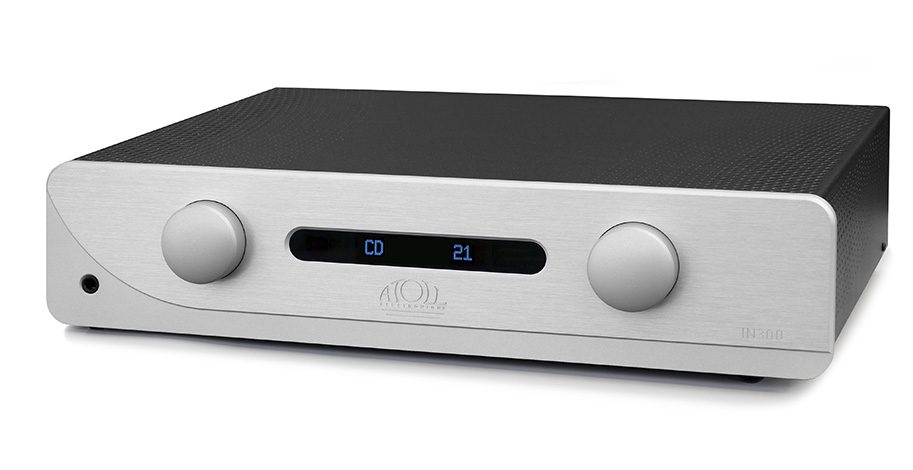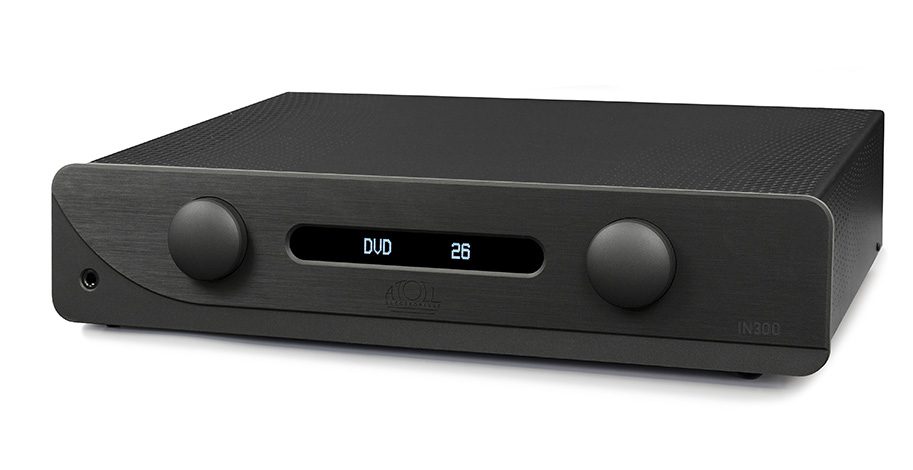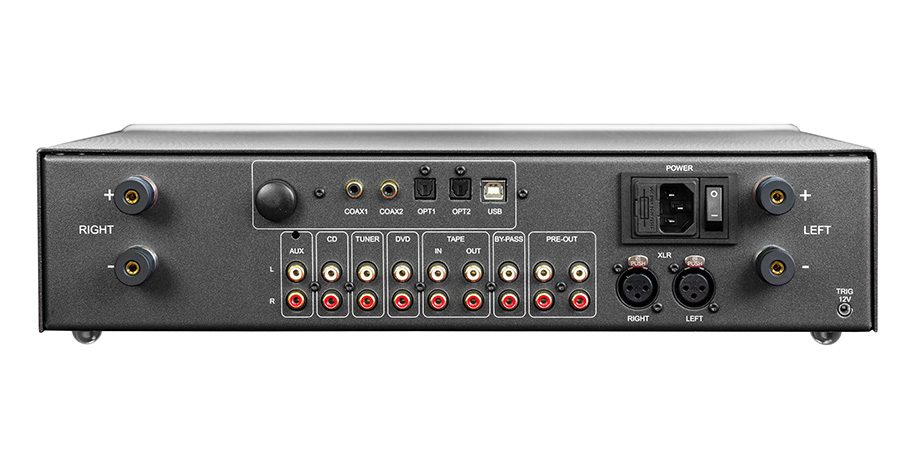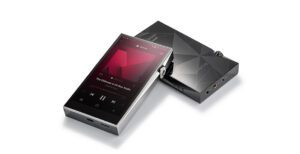
I first encountered the Atoll brand from France four years ago when my local retailer had one of its amplifiers on loan for evaluation. I remember being pretty impressed by it. The original UK distributor then ceased to import the brand and so it disappeared off my radar until I spotted it again at a recent show with a new distributor. So the time seemed right to get one in for review, the one chosen being the IN300 integrated amplifier with built-in DAC.
The IN300 integrated 150W amplifier from Atoll sits at the top of its Signature series of integrated amps, which starts with the 50W IN50 at £850 up to the 120W IN200 (that we tested in issue 116) at £1,750. The flagship IN400Se from the high-end 400 Line, introduced in 2010/11, and a radical departure for the company in terms of styling, sits at £4,900, leaving a rather large gap between itself and the IN200. The IN300, part of its Signature series, plugs that hole and was introduced in 2016 when the company expanded its production facilities in Normandy.
Atoll was founded in 1997 by Stéphane and Emmanuel Dubreuil because they perceived there was a lack of audiophile products at affordable prices. Its very first products were the IN50 and IN80 integrated amps, the PR100 preamp and two power amps – the AM50 and AM80.
Atoll enlarged its original premises in 2001 and in the years that followed, the company added a three-channel and five-channel power amp, CD players and transports, DACs, streamers and all-in-one streamer/DAC/amplifiers.
Hand Assembled
At its HQ and factory in Brécey, Normandy, all of its products are hand assembled, from, wherever it can, components sourced in France. And when I say assembled by hand, that’s what they are – components are inserted and soldered by hand, because Atoll believes that is the best way to do it.

Atoll uses discrete-component Class A circuits for its preamps and Class AB for their power amps, which use MOSFET output transistors. This combination, the company believes, offers the advantage of the highest efficiency with outstanding audio performance.
The IN300 integrated amplifier I am reviewing here impresses with its weight (16kg) when you take it out of its box. It uses a dual mono circuit configuration and its weightiness is no surprise when you learn it uses two output transformers rated at 440VA and 12 x 6,800µF filtering capacitors. It runs high-end cable to the speaker output posts, which are custom manufactured for Atoll.
Atoll says that it uses the bear minimum of feedback to provide ‘a lot of dynamics and a very natural sound’. The analogue stages use MKP Mundorf shielded capacitors, while in the digital stages they use MKP Vishay capacitors.
All stages use discrete components and the circuit boards are double-sided with a nickel/gold finish.
When you consider that this 150W integrated amplifier only sells for £2,995, the fact that it comes with a DAC built in as standard makes it really good value for money. Even within Atoll’s own product line-up, consider that if you bought the lower-priced IN200 (£1,750), the optional DAC board would set you back another £350.
The DAC in the IN300 uses an AKM AK4490 chip set and boasts a signal-to-noise ratio and dynamic range of 120dB. It will handle 16-32bit PCM streams up to 384kHz on its asynchronous USB input and up to 192kHz/24bit on its coaxial and optical inputs. This means you could take the digital output from your CD player and feed it into the IN300’s DAC. If you have an entry-level or lower-end CD player, this could well deliver an improvement in sound quality, but more about that later.
The DAC also has a high-resolution USB B input. The instruction manual seems to suggest the USB input is intended to connect a computer. I didn’t want to do that, although you could do that to get you started. But it would be better to use a reasonably priced streamer, such as the SOTM SMS200 Neo or, as I did, the Pro-Ject Stream Box Ultra S2. Of course, it worked perfectly, so ignore what the manual says.
I must admit that the Atoll’s rather understated, minimalist styling did appeal to me and it did look moody in its black finish with that stylised swoop sculpted into the front and its small display screen.
You can access all the amp’s functions using the two rotary knobs either side of the display screen, but most people, like me, will doubtless use the excellent remote control. On the bottom left of the front panel, there is also a 6.3mm jack headphone output.
Some DACs these days, especially at higher price points, throw in a lot of bells and whistles, such as numerous digital filters. The IN300 was blissfully lacking in these filters, which I have in many cases wasted hours listening to, trying to discern the differences, only to discover that they are either non-existent or so slight as to be inconsequential.
Extreme clues
On the back panel, speakers connect to chunky terminals on the extreme left and right – a clue to its dual-mono topology. To the right of the left channel speaker terminal are the DAC inputs – two coax, two optical and a USB. Next to those is the Bluetooth receiver. Below those are five RCA line level inputs, plus a tape output and two preamp outputs to connect to a separate power amplifier. There are also two XLR inputs. There was no phono input on the review model, but an optional MM/MC phono board is available for an extra £100. I evaluated the IN300 using the Pro-Ject streamer straight into the Atoll’s DAC. In addition to that I fed it with a diet of CDs played on an Audio Note CDT-Five CD transport and DAC5 Special. Speakers used were the NEAT Xplorer floorstanding speakers.
I started out with some streaming from Tidal. Kicking off with the uptempo ‘No One Emotion’ from George Benson’s 20/20 album, I was immediately impressed at how well the IN300 drove the sound along with great dynamics, pace and poise. Benson’s vocals were conveyed with presence, power and emotional impact without sounding overpowering. I had another well-respected integrated amp to hand that costs almost £1,000 more and there was no doubt I preferred the Atoll, which simply put more life and pizazz into the music.

Turning to guitarist Larry Carlton, I played ‘Hello Tomorrow’ from his Discovery album and the IN300 impressed again with its insights into Carlton’s guitar play, while percussion and drums were snappy and detailed. Saxophone had warmth, body and projection without being glaring. Bass lines were also weighty and tuneful. I then streamed a wonderful ballad from Natalie Cole’s Good to be Back album where she duets with legendary vocalist Freddie Jackson. The IN300 managed to capture the energy and emotion of their soaring vocal performances without making them shout. The IN300 also convincingly outperformed the other more expensive integrated amp.
Even more impressive
The sound using the Audio Note CD transport and DAC was even more impressive and the IN300 proved more than good enough to show a big improvement in quality, demonstrating that it is worth buying as good a CD player as you can afford to pair with it.
Using Ben Sidran’s ‘Sunny Side of the Street’ from the Enivré d’Amour CD, there was no doubt that his vocals were more open and articulate with more emotion, while drums and percussion were crisper and more dynamic and the bass line really moved along better, conveying the rhythmic structure of the song more coherently. So, if you are using a low-to-middle-priced CD player, using the IN300’s DAC may provide a worthwhile improvement in sound.
The only thing left for me to try was its headphone output. How good is that? To find out, I connected a pair of Focal Clear headphones. This is how I found what I would say is the IN300’s Achilles heel. The sound using headphones was rather compressed, uninvolving and strangely bass heavy. The music seemed to lose its get up and go. So it would be worth looking at a separate headphone amplifier if that’s how you listen for a lot of the time. But if that’s its only minor flaw, that is not bad going.
The Atoll IN300 is an exceptionally impressive piece of kit. It is beautifully made, sounds superb and with its built-in DAC represents extraordinary performance for the price. I recommend it wholeheartedly.
Technical specifications
- Type Two channel solid state (MOSFET) integrated amplifier
- Inputs Analogue 5 × RCA, 1 × XLR, 1 x bypass
Digital 2 × coax, 2 × optical, 1 × USB, 1 × Bluetooth - Outputs 2 × pre out, 1 × tape out, 1 × headphone jack 6.35mm, 1 × speaker
- Power output 2 × 150W RMS into 8Ω, 2 × 260W RMS into 4Ω
- Distortion 0.05% @ 10W, 1kHz
- Bandwidth 5Hz–100kHz (-3dB)
- Signal to noise ratio 100dB
- Dimensions (H×W×D) 103mm × 440mm × 360mm
- Weight 16kg
- Price £2,995, optional MM/MC phono board at £100 extra
Manufacturer
Atoll Electronique
UK distributor
Replay Audio Distribution
+44(0)1925 982507
By Chris Frankland
More articles from this authorRead Next From Review
See all
PrimaLuna EVO 100 phono preamplifier
- Apr 22, 2024

Reiki Audio SuperSwitch Master Pro + Servant Pro
- Mar 27, 2024

Melco Audio N1-S38 music server
- Mar 27, 2024











